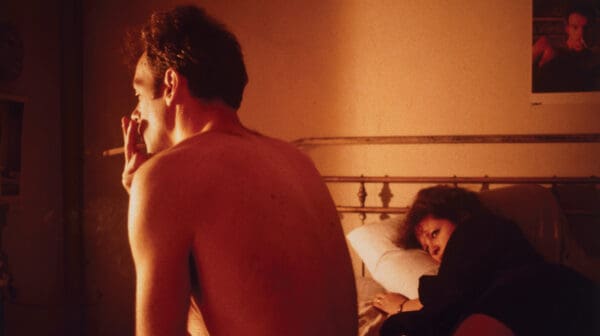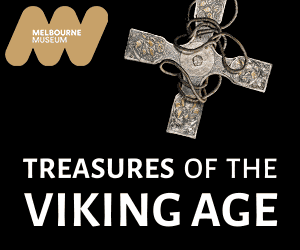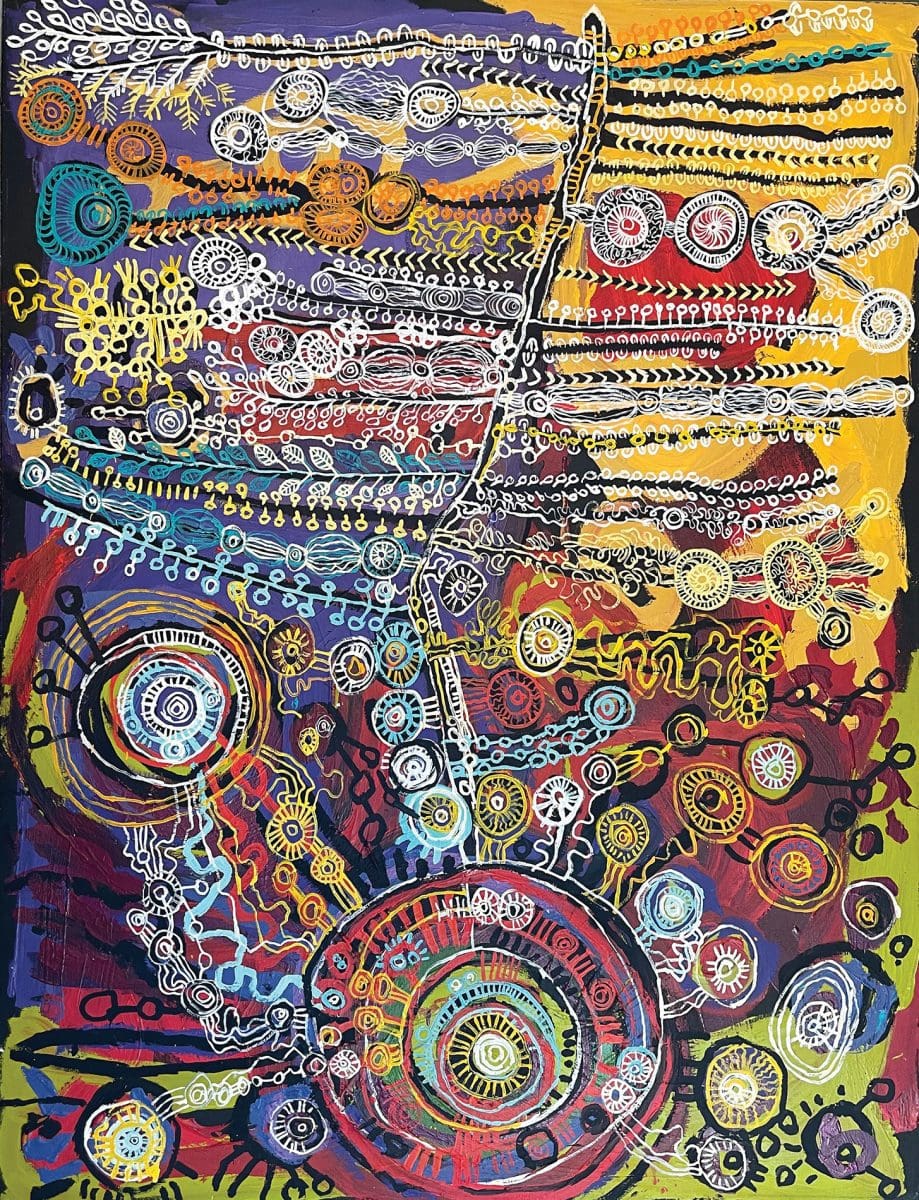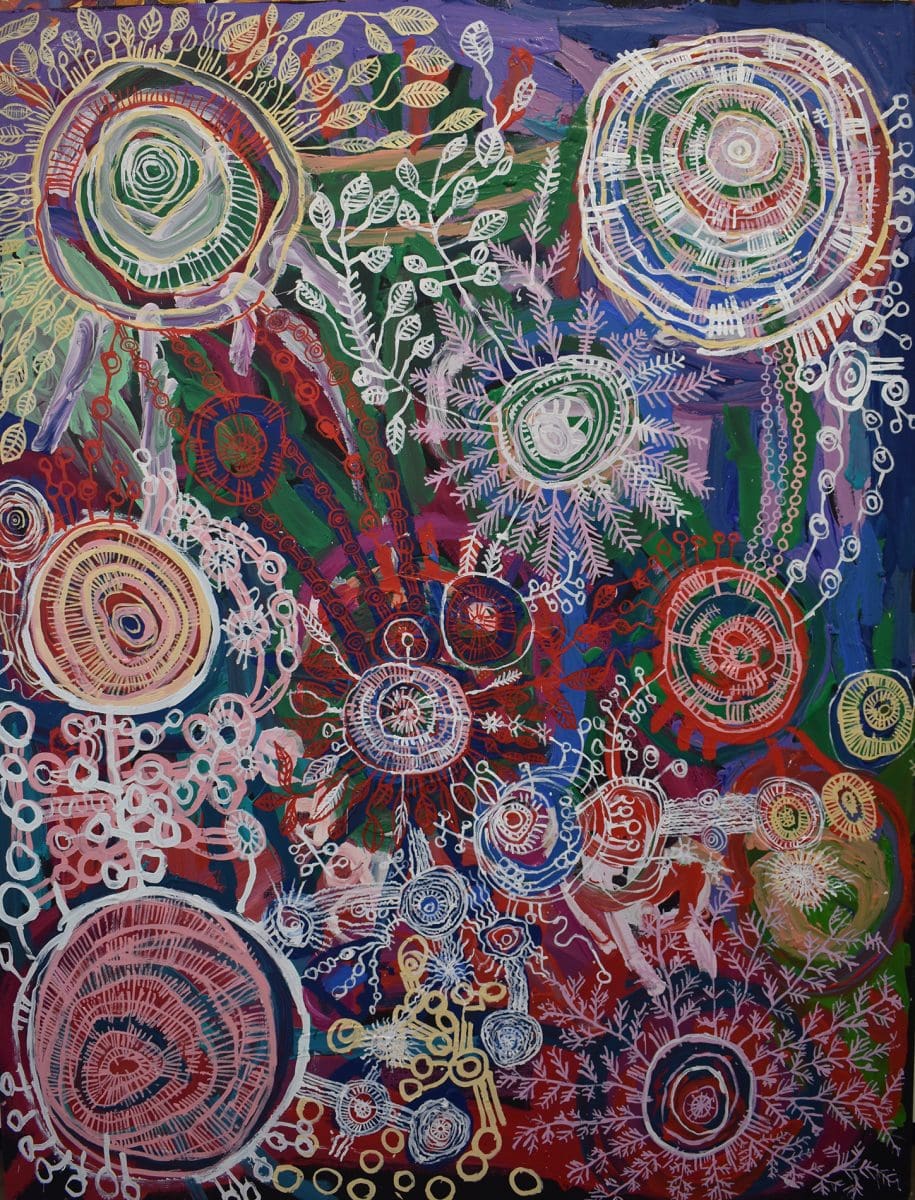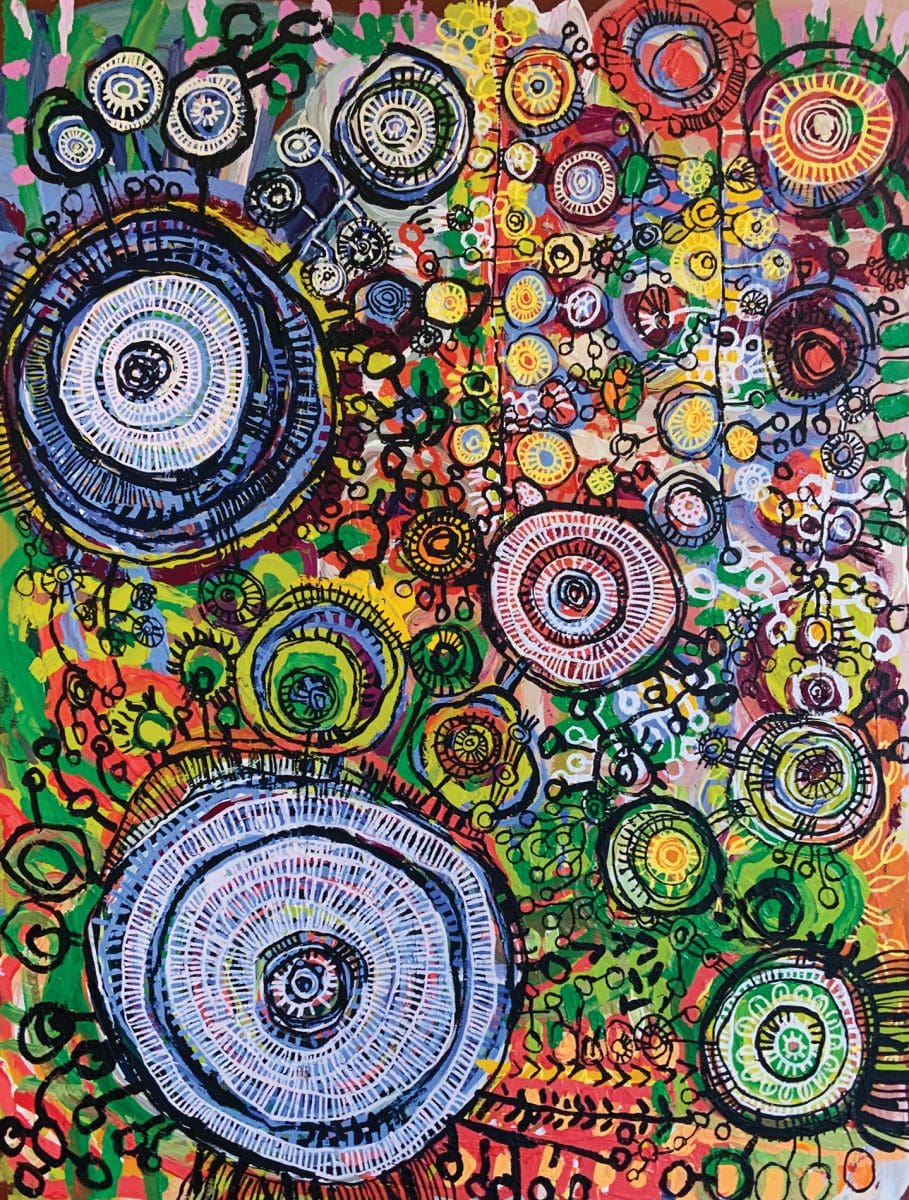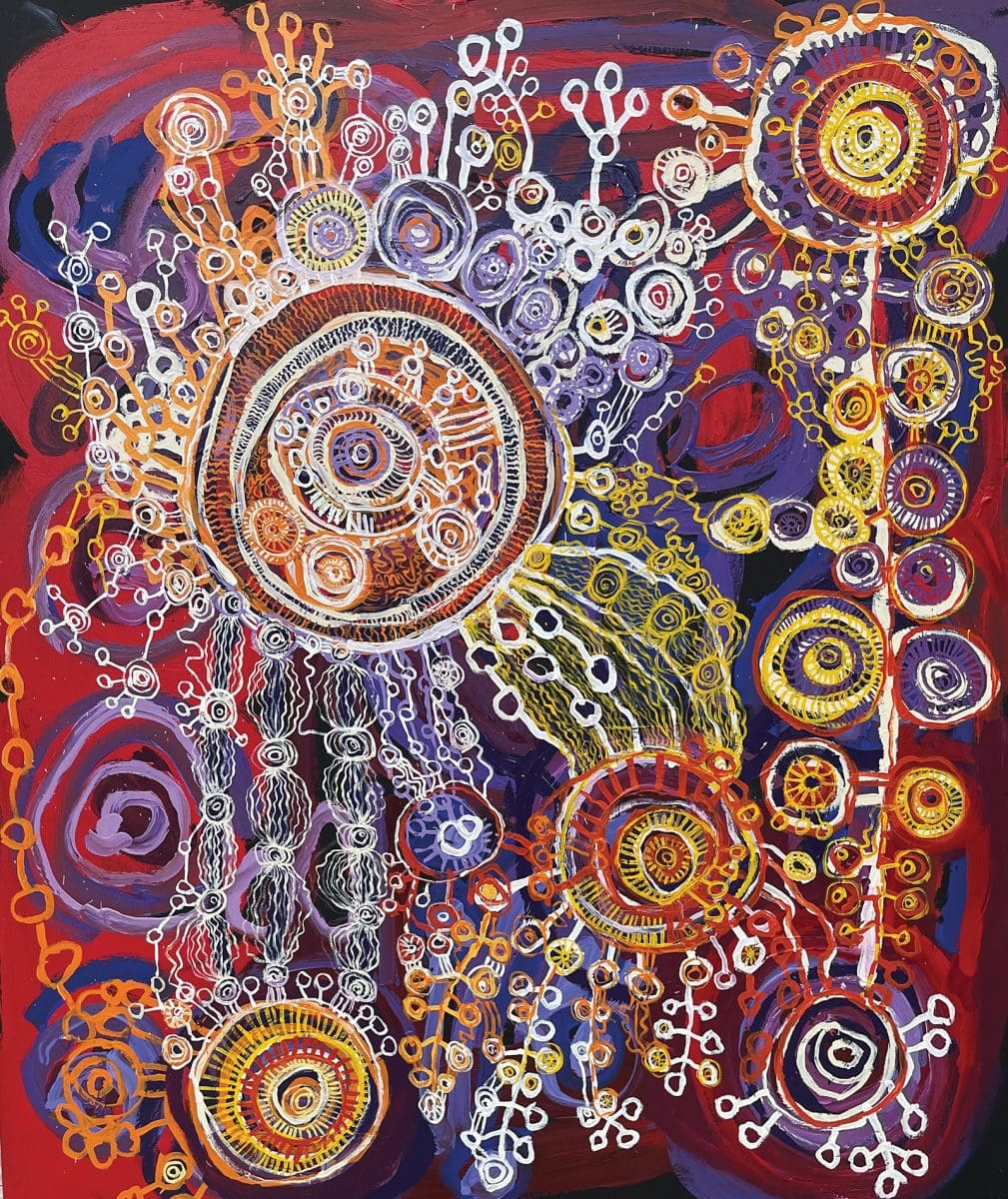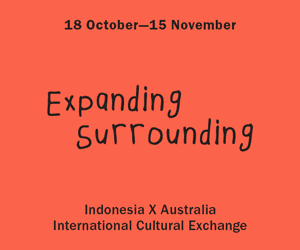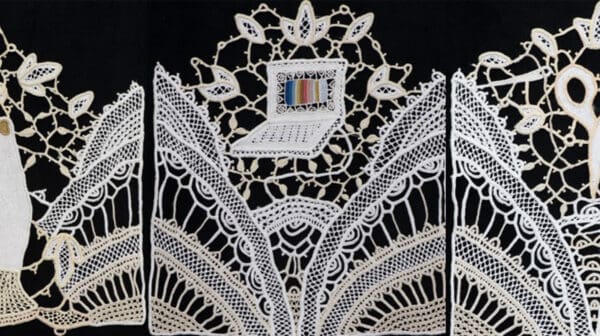Sally Scales grew up surrounded by art and artists. Raised in the Anangu Pitjantjatjara Yankunytjatjara (APY) lands in remote South Australia, her mother and grandmother were both painters; her father was a leather maker, community leader and a founder of the not-for-profit Maruku Arts and Crafts. Country and culture were integral to Scales’s upbringing—and art and cultural leadership were all around her.
In adulthood, Scales became a respected cultural leader herself, working in consultancy, sitting on arts and culture boards, and being heavily involved in the Uluru Statement from the Heart since its inception in 2017. A portrait of Scales, painted by Tsering Hannaford, was a finalist in the Archibald Prize this year. But it wasn’t until Covid lockdowns hit in 2020 that, with more time on her hands, she started to explore painting, continuing the legacy of her Elders while carving out her own style.
“For me, it was really about looking at my own lineage, my grandmother and my mother’s style, and weaving that into it,” the artist says. “But I also realised that I’m very much a contemporary artist—there’s so much that I like in the world of seeing artists who are so different in their own styles. I like not being very similar to others.”
In just a couple of years, Scales has become a celebrated artist in her own right, winning various awards and being named as a finalist for this year’s National Aboriginal and Torres Strait Islander Art Awards (NATSIAA). In 2021, she had her first show— a collaboration with her mother, Josephine Mick, highlighting the generational nature of her work. Scales’s artworks are bold and striking, with a playful and inventive use of colour, space and size; she disregards convention to make her work her own.
The relationship to art in Indigenous communities is unique with the form being a “crucial element” in preserving culture across generations—there’s an important social role. Scales’s work tells her family’s Tjukurpa—ancestral creation story (she prefers this to the term Dreamtime)—of Wati Tjakura, an edible skink lizard who was killed by an army of water snakes on sacred Aralya Country. Each piece gives a different interpretation of the tale, but the artist is not interested in verbally retelling the myth.
“There’s too much focus on Indigenous artists having to tell their story—it becomes anthropological,” she says. “I hope artists don’t feel that they have to. I’m painting a piece of me already, and I feel like that should be enough.”
Instead, she wants viewers to form their own meanings through spending time with the artwork, as they would with any other piece of contemporary art. “I want people to see my paintings and really have their own time with it, sitting in the moment and feeling it or going, ‘Oh, I really like how these colours do this, or these colours shouldn’t go together in the art books, but I like how they’ve done that.’”
Recently, Scales collaborated with online clothing retailer The Iconic on an Uluru Statement T-shirt for NAIDOC Week. The design highlights the two core elements of the Uluru Statement: Voice and Makarrata, a Yolngu word meaning coming together after struggle. “That was my two worlds colliding— the Uluru Statement is such a core bit of my world,” she says. “What’s interesting is seeing so much more wearable art out there, and Indigenous artists being explored.”
Having been involved with the APY Art Centre Collective in leadership and cultural liaison roles since 2013, Scales was instrumental in opening an Adelaide APY gallery and studio in 2019, and relocated to the city herself. The studio provides space for Elders to practise their art in a culturally safe and supportive environment, despite being away from Country. When Scales began her painting practice, she was able to create in this special space. “It’s like a little APY embassy where we can all be together . . . it’s the best thing we’ve ever done,” she says.
Aside from art and activism, Scales is also a mother to six-year-old Walter. When I ask whether her son has any interest in art—whether this might continue for a fourth generation—she calls him over to ask him herself. “Can Mummy ask you a question? Do you want to do painting?” she questions gently. “No,” he says, then a moment later, “Yeah.”
“He’s wearing his Uluru Statement T-shirt,” she laughs when she returns to the phone. “Walter does enjoy painting, but I want him to do whatever he wants to do. Painting is such an important part of our lives and our family, but I’ve also got beautiful nephews and nieces, and it can be carried on by all of them or one of them. That’s the great thing about all of it.”
National Aboriginal and Torres Strait Islander Art Awards (NATSIAA)
Museum and Art Gallery of the Northern Territory (Darwin NT)
Until 15 January 2023
This article was originally published in the September/October 2022 print edition of Art Guide Australia.
